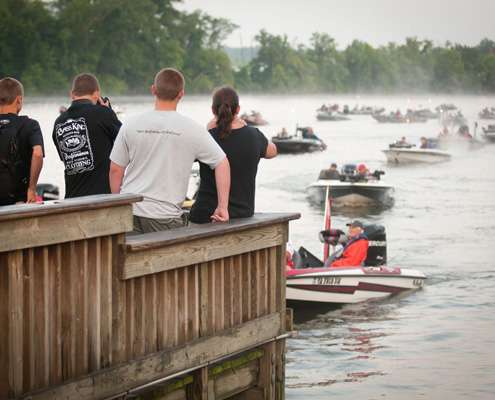
Like any fishery, the James River has its set of challenges: lots of pressure and fishable water (along with some “dead” water), but the most befuddling thing can be its tidal fluctuations. Understanding how the tides affect the bass can mean the difference between making a check and not.
Bernie Schultz has fished many tidal waters in his career, and says that the James’ tides can be tricky.
“Current is key on a tidal river. When it’s moving, it positions fish better on the available cover. The last part of the falling tide and the first part of the incoming tide is best, but there are exceptions,” he said. “When there’s grass in a tidal fishery, high water is a good thing. When there’s no grass, low water is best. This is because the fish roam around in high tide; the high water disperses them.”
Since tidal water is always in flux, you can – where possible – catch up with that ideal part of the tide. This is known as running the tide. You might use lots of gas keeping up with the tide, but sometimes it’s the only way to do well in a tournament.
“If your best fishing is on a falling tide, a tide chart is essential. You need to know the tide phase at different sections of the river so that you’ll know exactly how far to run when you need to so you’ll always be ahead of it,” he said. “If there’s a certain tide that’s productive for you, you want to keep up with it. That’s about as good of a pattern as you’ll establish in a tidal fishery.”
One hang-up that many anglers run into is lingering in one place after the ideal tide has come and gone.
“I have a tendency to slow down when I’m around fish, even when I need to be on the move,” he said. “The guys who will do best are those who are right where they need to be at the right time with the right bait on the right cover; they don’t wait for it to come to them.”
Many times this amounts to a milk run of quick stops. Two more of Schultz’s rules of thumb come to mind: use reaction baits when the current is moving, and otherwise use small, compact baits.
“There will be lots of small crankbaits and topwaters and little spinnerbaits thrown during this event, but the main thing is to keep up with the tide,” he said.
The bottom line is this: know what kind of cover the bass are using and the tidal stage when you get the most bites, then use your tide chart to move to similar spots when they get the right tide. If you can spare a full day of practice, it’s best to fish a certain kind of cover for a full tide cycle so you’ll know when the best bite is. This will prove to be well-invested time.
